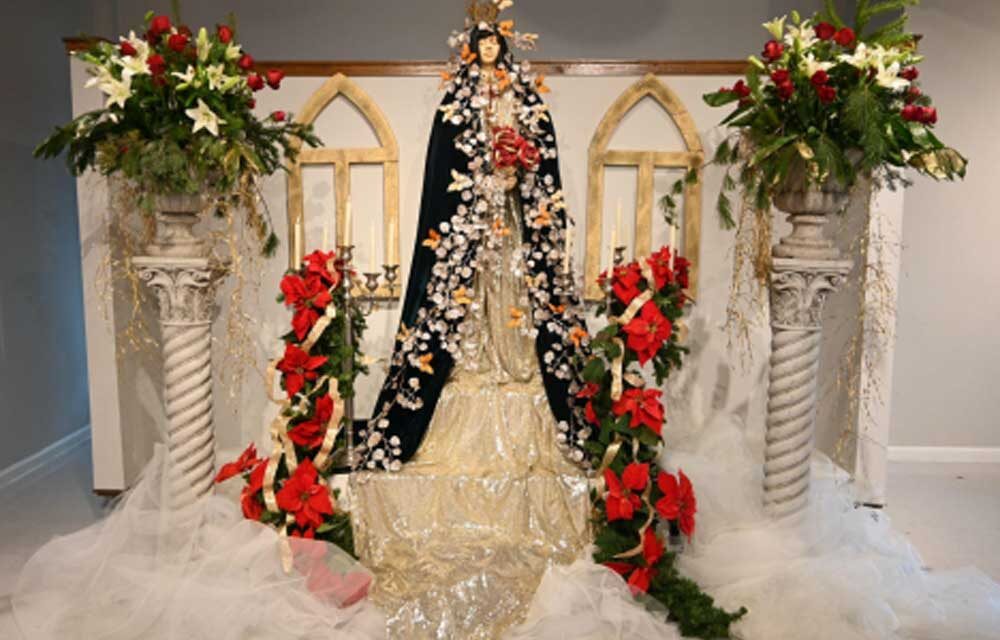In its forty-four-year history, San Antonio’s Centro Cultural Aztlan has been led by only two executive directors. Carlos Gonzales served as founding director from 1977 to 1987. The current and longest-serving Executive Director, Malena Gonzalez-Cid, started in 1987 and has established a consistency in leadership seldom seen in the arts locally or nationally.
Over this period Gonzalez-Cid relocated the Centro from the deep Westside at the Las Palmas Mall to the emerging Westside, north of Jefferson District. She has met and interacted with thousands of individuals dedicated to the arts. Her thick Rolodex contains several thousand names—principally of Latinos in the arts–-artists, writers, and poets. In her 34 years as Executive Director of the Centro Cultural Aztlan, Gonzalez-Cid exhibited more than 10,000 distinct artworks.
A San Antonio native, Gonzalez-Cid began her formal art education at UTSA in 1981 studying Comparative Humanities. She had the good fortune of a work-study position with the legendary Dr. Jacinto Quirarte, UTSA Dean of the College of Fine Arts during the 1980s and a member of the Art Department. In the early 1970s, Dr. Quirarte initiated one of the first research studies of Mexican American and Chicano Art. He was among the first to document and write about several emerging Chicano artists, including Mel Casas, Luis Jimenez, Amado Pena, and Rudy Trevino.
Throughout his career at UTSA Quirarte received several grants and university support for his research on Latino artists enabling him to hire work-study students and graduate assistants. Malena Gonzalez-Cid found part-time work with Professor Quirarte and considers him
an exceptional mentor. She acknowledged that her interests and understanding of Latino art grew because of Quirarte’s teaching and research. Gonzalez-Cid also credits her mentor Quirarte for making her aware of the lack of business acumen in the art organizations and the pressing need for leadership in the Latino art world.
Support for Westside arts projects received a boost with the election of Henry Cisneros and Bernardo Eureste to the City Council in 1978. In a 1979 New York Times article, writer William K. Stevens credited the 35-year-old Eureste as “part of an electoral revolution that has given Mexican-Americans control of the City Council, transformed this city’s power relationships, altered its attitudes and outlook, ended a long‐time dominance of public affairs by an entrenched business oligarchy and brought San Antonio to a crossroads in its long and colorful history.”
While City Councilman Henry Cisneros championed economic development and political empowerment for Mexican Americans of the Westside, Councilman Eureste focused on the lack of funding for the arts and cultural programs in the city’s Mexican American districts. Arguing for fairness and equity, Eureste was able to garner the necessary six votes to provide initial funding in the late 1970s for the Centro Cultural Aztlan and the Guadalupe Cultural Center. San Antonio city arts funding also later enabled the establishment of the Conjunto Festival, the Cine Festival, and Dia de Los Muertos celebrations.
When Gonzalez-Cid accepted the Executive Director’s post at the Centro Cultural Aztlan in 1987, Latino arts organizations still had a difficult time acquiring funding resources. The election of Henry Cisneros to four terms as mayor during the decade of the 80s raised hope and expectations for Westside organizations. A decline in the number of Latino organizations in the mid-late 1980s convinced the Westside’s art organizations that they had to organize to maintain cultural sustainability. In the early 1990s, Gonzalez-Cid helped to establish the Westside Arts
Coalition, an organization that lobbied the city for greater equity and fairness in funds for the arts.
In later years, Mayors Ed Garza and Phil Hardberger contributed to securing the Centro’s future. Mayor Garza was instrumental in moving the Centro to the Deco District of the Jefferson area as well as finding funding for the relocation. Mayor Hardberger lent his support to the Westside arts organizations by increasing their share of hotel and motel tax funds, city funds that he viewed as essential to maintaining equity and fairness in art funding.
Over the past 44 years, the San Antonio Centro
Cultural Aztlan has organized exhibits and cultural events highlighting both established and emerging Latino artists. Centro staff have recently begun documenting the work of Latino artists and the visions they incorporate in their
works using video technology that will provide oral history archives related to Latino art and culture. The Centro also
promotes artworks by participating artists and helps the artists develop networking skills. Each December 12, the Centro features Latino artists’ interpretations of the story of the Virgen de Guadalupe.
Oscar Galvan is among the artists included in this year’s Virgen de Guadalupe Exhibition. Galvan has exhibited at the Centro Cultural Aztlan for the past 12 years. He also contributed to the Day of the Dead and Mariachi Exhibitions. Galvan is a native of San Antonio and studied art at Our Lady of the Lake University.
Robert Wilkens [aka Roberto Dorantes Alonso] enjoys a wide range of artistic mediums including drawing, sculpting, and welding, but his true passion is painting. He painted a mural at the Washington, D.C. White House East Wing Theater Room. His painting in the Centro’s recent exhibition features a Virgen de Guadalupe with a long striking dark-colored shroud.
Hector Garza, a high school art instructor and artist, makes art for the purpose of “reimagining the intersection of Mexican traditions and contemporary American pop culture.” Garza earned a graduate degree in education from the University of Notre Dame and a Masters of Fine Arts in painting from the Savannah College of Art and Design. Garza’s 2021 contribution to the Centro’s Virgen de Guadalupe Exhibition is a painting of green nopales, one of Mexico’s most popular motifs, surrounding the Virgen de Guadalupe.
Malena Gonzalez-Cid: A Champion of Latino Arts









